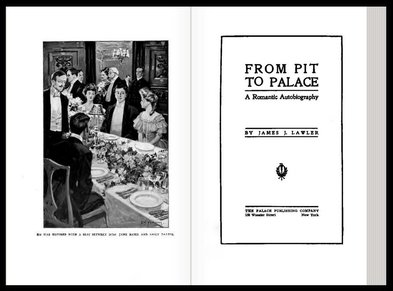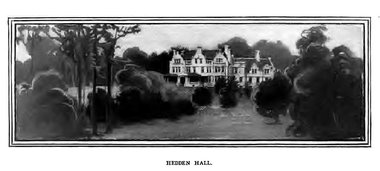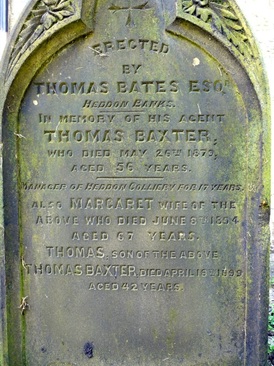Many biographies have been written of successful men who began life under the poorest conditions and while this sketch, which consists of more facts than fiction, might appear like repeating an old story ...
... a young genius by the name of George Stephenson, now well known to fame, gave the world the first practical demonstration of the locomotive ... and this was from the brain of an uneducated boy!
The geography is a bit out as are the spellings of some of the places. For instance:
The town of Wylam is situated about eighteen miles north of the famous city of Newcastle upon Tyne ... which takes its name from that crazy stream the River Tyne, whose riplets are brought into existence from the melted snows on the Cheviot Hills of Scotland.
Heddon on the Wall is spelt 'Hedden on the Wall', and Heddon Hall as 'Hedden Hall'. The illustration of Hedden Hall on page 126 (shown above) bears no resemblence to the current (or former) building and the description of the interior and grounds appear greatly exagerated and much more like Close House (which is not mentioned at all).
An autumn excursion down the River Tyne to Sunderland on a steam paddle boat enables the Heddon villagers 'to see for the first time the great Atlantic Ocean'.
By this time in the history of the village of Wylam a railroad bridge had been built across the River Tyne, which made connections with the North British Railroad. This line now skirted the opposite bank of the river, and covered the distance between the city of Newcastle and Edinburgh.
The reported year of birth of the author, James Joseph Lawler, is given as 1856 on the Online Books website. If events are correct he would have gone down the pit seven years later (1863).
The book records a major event, an underground explosion of a steam boiler at Wylam pit, that ended James Raymond's brief coal mining career. This was a real event and took place on 27th October 1865. You can see details on the Durham Mining Museum website which links to transcripts of two local newspaper articles.
The book describes several boyhood friends, including Ned Jackson, nephew of Isaac Jackson, and Jack Charlton from a family of carpenters and joiners. James and Jack remained good friends 'until separated by the Atlantic Ocean', a possible clue to the author's emigration.
Erected by Thomas Bates esqr., Heddon Banks in memory of his agent Thomas Baxter who died May 26th 1879 aged 56 years manager of Heddon Colliery for 17 years. Also Margaret wife of the above who died June 8th 1894 aged 67 years. Thomas son of the above Thomas Baxter died April 18th 1899 aged 42 years.
Lawler's American Sanitary Plumbing: a Practical Work on the Best Method of Modern Plumbing (1896).
Modern Plumbing, Steam and Hot Water Heating: a new practical work for the plumber, the heating engineer, the architect, and the builder (1899).
Practical Hot Water Heating, Steam and Gas Fitting, Acetylene Gas, how generated, how used (with George Hanchett, 1900).
He also took out several patents including US Patent 752987 A for a Hot Water Radiator in 1904:
Be it known that I, James J. LAWLER, a citizen of the United States, residing at 31 1 South Third avenue, Mount Vernon, county of Westchester, and State of New York, have invented a new and useful Improvement in Hot-Water Radiators, of which the following is a specification.
The 1900 US Census has a James J Lawler born in England in 1854, living in Mt. Vernon City, Westchester, New York. His parents were Irish. The immigration year is given as 1863 and shows that in 1900 he had been married to Fannie I Lawler (born in New York,1870) for eight years, and had one child.






 RSS Feed
RSS Feed
